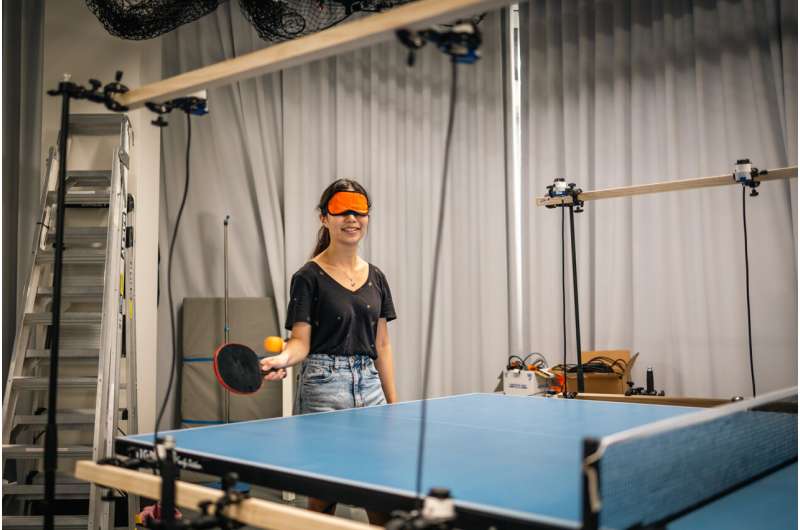This article has been reviewed according to Science X's editorial process and policies. Editors have highlighted the following attributes while ensuring the content's credibility:
fact-checked
trusted source
proofread
Making table tennis accessible for blind players

Table tennis has been played for decades as a more accessible version of tennis. The sport is particularly beginner-friendly while maintaining a rich level of competitive play. However, like many sports, it remains inaccessible to people who are blind or have low vision.
Phoebe Peng, an Engineering Honors student at the University of Sydney, is researching ways to allow people with low vision and blindness to play ping-pong using sound.
The process uses neuromorphic cameras and an array of loudspeakers, designed to allow players to track the ball and movements based on sound. Peng will present her work Dec. 6 as part of Acoustics 2023 Sydney running Dec. 4–8 at the International Convention Center Sydney.
According to Peng, table tennis makes a perfect test case for this kind of technology.
"The small size of the ball and table, along with the movement of the ball in 3D space, are things that make table tennis difficult to play for those with low vision and complete blindness," said Peng, who completed the work as part of her Honors thesis. "Making this sport more accessible while also exploring the potential of neuromorphic cameras were my two biggest motivators."
The neuromorphic cameras Peng employed are ideal for tracking small objects like table tennis balls. Unlike normal cameras that capture complete images of a scene, neuromorphic cameras track changes in an image over time. Using two perfectly positioned cameras, Peng could identify and track a ball in three dimensions in real-time. She then fed that data into an algorithm controlling an array of loudspeakers along the sides of the table, which created a sound field matching the position of the ball.
While this system works well, Peng says more experimentation is needed before it will be ready for actual play.
"An ongoing technical challenge is the matter of human perception of sound," said Peng. "There are limitations on how accurately people can perceive sound localization. What type of sound should be used? Should the sound be continuous? This is a technical challenge we'll be tackling in the next stage of development."




















